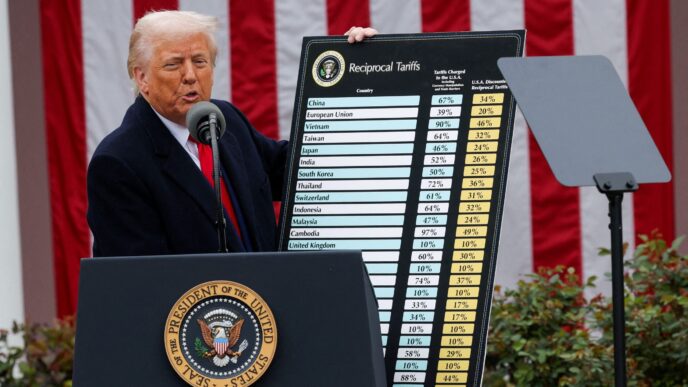Environmental, Social, and Governance (ESG) considerations are increasingly dictating how investors, regulators, and the public judge a company’s performance and ethical standing. While conversations around ESG often highlight environmental sustainability and social responsibility, the “G” component – governance – serves as the backbone for ensuring that an organisation’s operations and leadership are anchored in integrity. Within this governance pillar, anti-corruption efforts, such as preventing bribery and fraud, are critical to upholding ethical standards. An organisation that tolerates or overlooks corrupt practices not only risks financial penalties and reputational harm but also undermines the principles of transparency and accountability that drive ESG value creation. By contrast, companies that actively combat corruption demonstrate a commitment to operating with honesty and fairness, creating trust and resilience in the global marketplace.
Globalisation, while opening new markets and revenue streams, also exposes organisations to diverse legal landscapes, cultural norms, and complex supply chains – all of which can increase vulnerability to bribery and fraud. In some regions, a lack of robust regulatory enforcement heightens the temptation to engage in under-the-table transactions or questionable financial arrangements to secure business advantages. Multinational companies, in particular, may discover that local agents or intermediaries are using unethical methods without senior management’s knowledge, thereby placing corporate leaders at legal and reputational risk. Moreover, digital transformation, with its intricate data flows and rapid transactions, has created new avenues for fraudulent schemes that can be difficult to detect and trace. Together, these global dynamics mean that a comprehensive, proactive approach to anti-corruption is not just an ethical imperative – it’s also a strategic necessity in an interconnected, high-stakes world.
In today’s marketplace, investors are looking beyond short-term financial metrics and demanding transparency around ethical conduct. Large institutional shareholders, private equity firms, and even retail investors increasingly ask for evidence that companies are tackling corruption risks head-on. This push extends to socially conscious consumers, who may avoid products and services linked to bribery or fraud scandals. At the same time, employees – particularly younger generations – are more vocal about working for organisations whose values align with their own. A single high-profile corruption case can erode trust and lead to plummeting share prices, customer boycotts, and talent attrition. In essence, ensuring robust anti-corruption measures is not just a moral responsibility – it’s also a key driver for maintaining market confidence and stakeholder loyalty.
Anti-corruption regulations, such as the U.S. Foreign Corrupt Practices Act (FCPA) and the UK Bribery Act, underscore the global push for more stringent enforcement. Companies found in violation can face steep fines, legal battles, and long-lasting reputational damage. Moreover, cross-border collaboration among enforcement agencies means that breaches in one jurisdiction can trigger investigations worldwide. In parallel, the rise of ESG-driven investing has reshaped market dynamics, with ethically oriented funds screening out businesses suspected of unethical dealings. Organisations that maintain rigorous anti-corruption protocols often find it easier to secure capital at favourable rates, partner with reputable international firms, and retain stakeholder trust. As a result, a proactive stance on bribery and fraud isn’t merely about avoiding penalties; it can be a source of competitive advantage in an increasingly vigilant and ethically conscious global economy.
The Role of Governance in Combating Corruption
Effective anti-corruption measures start at the highest level of corporate governance. By setting a clear tone at the top, board members can mandate zero tolerance for bribery and fraud, embedding these priorities into the company’s broader strategic framework. Independent directors and well-structured audit committees are crucial in maintaining oversight, reviewing internal controls, and ensuring transparency in financial reporting. Regular updates from compliance officers or external auditors help the board stay informed about any emerging risks or red flags, enabling prompt and decisive action. Ultimately, when the board demonstrates strong accountability – holding senior leaders responsible for upholding ethical standards – this commitment cascades through every layer of the organisation.
While board policies lay the groundwork, day-to-day leadership shapes the ethical culture in which employees operate. Senior executives who model integrity – by refusing dubious practices, praising whistleblowers who surface legitimate concerns, and consistently enforcing anti-corruption policies – signal to employees that ethical behaviour is non-negotiable. This cultural emphasis encourages staff to speak up if they witness suspicious transactions, rather than fearing reprisal or inaction. Ongoing training programs, frequent reminders about relevant regulations, and open-door policies for reporting concerns further embed honesty and transparency into the corporate culture. In this way, ethical leadership functions as both a deterrent to wrongdoing and a catalyst for responsible decision-making across all departments.
A robust compliance framework underpins any successful anti-corruption effort, tying together risk assessment, reporting mechanisms, and enforcement procedures. In addition to dedicated compliance teams conducting periodic risk assessments to identify regions, business units, or supply-chain partners most susceptible to bribery or fraud they can also develop clear policies that detail the dos and don’ts of daily operations – outlining permissible gift-giving thresholds, mandatory due diligence for third-party contractors, and the repercussions for violations.
To ensure these standards are upheld, companies must maintain strong internal controls and escalation channels, including whistleblower hotlines or anonymous reporting platforms. By integrating these structures into the broader enterprise risk management (ERM) system, organisations gain a holistic view of how corruption threats interact with other strategic challenges. In doing so, governance goes beyond simple rule-setting; it becomes the mechanism by which companies actively detect, respond to, and deter unethical behaviour, thereby safeguarding both reputation and financial stability.
Best Practices for Anti-Corruption Policies
- Comprehensive Codes of Conduct: The cornerstone of any anti-corruption programme is a well-defined code of conduct that leaves no ambiguity about what constitutes unethical behaviour. This code should outline zero-tolerance policies toward bribery, fraud, and any other illicit financial dealings. Beyond legal compliance, it should clarify the ethical standards expected across all levels of the organisation – covering not only monetary transactions but also activities like gift-giving, entertainment, or other conflicts of interest that could create a perception of impropriety. Effective codes of conduct provide concrete examples, define the consequences for violations, and offer clear guidance for employees who encounter grey areas in their daily roles. In multinational operations, it’s crucial that the language be adapted to local norms and regulations without compromising the code’s overarching principles, ensuring every team member understands and can uphold the organisation’s stance against corruption.
- Third-Party Due Diligence: Vendors, suppliers, agents, and joint-venture partners can unwittingly become conduits for corrupt practices. Even if senior leadership is firmly committed to ethical behaviour, lapses among third parties can tarnish the company’s reputation and expose it to legal liability. To mitigate these risks, organisations should implement rigorous due diligence processes before onboarding external partners and maintain ongoing oversight thereafter. This might involve background checks, references, or contractual clauses that require compliance with anti-bribery laws and transparent reporting. By actively managing third-party relationships – rather than passively assuming good conduct – companies reinforce their zero-tolerance policy and extend an ethical culture across their entire supply chain.
- Training and Ongoing Education: Anti-corruption policies are only as effective as the people tasked with applying them. Regular, targeted training helps employees recognise red flags – from unusual vendor requests to abnormal patterns in expense reports – and respond appropriately. Scenario-based learning can be especially powerful: walking through hypothetical dilemmas, employees gain practical experience on how to handle bribe solicitations, questionable “facilitation” payments, or pressure to fudge financial figures. Management should also encourage open dialogue about the challenges staff might face in specific regions or industries where corruption is more prevalent. Beyond initial orientations, periodic refresher courses and updated guidance – especially when laws or organisational structures change – ensure that anti-corruption measures remain front-of-mind. By coupling strong policies with ongoing education, organisations create a workforce that’s both prepared and confident in identifying and stopping unethical practices.
Integrating Anti-Corruption into ESG Reporting
As the appetite for transparent reporting continues to grow, companies that fail to publicly address anti-corruption measures risk appearing complacent or opaque in their ESG commitments. To avoid this perception, organisations should look to established frameworks such as the Global Reporting Initiative (GRI) or Sustainability Accounting Standards Board (SASB), which include governance and anti-corruption indicators. These standards provide guidance on disclosing relevant policies, training completion rates, and any investigations or remedial actions taken when violations occur. In practice, metrics might include the number of reported bribery incidents, the percentage of employees trained in anti-corruption protocols, or the extent of third-party due diligence. By presenting concrete data rather than broad assurances, companies can demonstrate a genuine commitment to ethical conduct – a key factor investors use in evaluating an organisation’s long-term viability and societal impact.
Establishing measurable goals is critical to embedding anti-corruption efforts into a broader ESG strategy. Targets might centre on reducing the volume of corruption-related incidents to zero within a specified timeframe or ensuring 100% of employees receive regular, scenario-based ethics training. Some organisations also track the number of whistleblower reports, using upward or downward trends as signals for further investigation or policy updates. The process of setting and monitoring these targets should involve cross-functional collaboration – drawing input from compliance officers, risk managers, human resources, and even external advisers. Regular reviews, possibly aligned with quarterly or annual reporting cycles, help leadership assess whether anti-corruption measures are effectively curbing risks and where additional resources or interventions may be needed. Over time, consistent monitoring fosters continuous improvement, transforming anti-corruption from a reactive, compliance-driven exercise into a proactive, strategic pillar of ESG success.
Anti-corruption performance, like other ESG elements, is ultimately about trust. Investors, customers, employees, and community members all want to see tangible proof that a company is taking ethics seriously. Regular updates – whether through annual ESG reports, investor briefings, or dedicated sections on the company website – can highlight progress on investigations, showcase policy enhancements, and detail training initiatives. Transparency is especially important when handling sensitive cases of bribery or fraud: while organisations may not be able to reveal all details due to legal constraints, providing a high-level account of the issue, the corrective actions taken, and any resulting governance changes can assure stakeholders that breaches are not swept under the rug. Ultimately, clear, data-driven reporting on anti-corruption practices underscores the organisation’s dedication to an ethical culture, aligning business objectives with the broader societal push for honesty and accountability in global markets.
The Road Ahead: Challenges and Opportunities
- Evolving Global Regulations: The global regulatory environment surrounding corruption is in a state of constant flux. Agencies in various jurisdictions – often coordinating across borders – are widening their reach and adopting stricter enforcement measures. High-profile scandals in one country can trigger parallel investigations elsewhere, exposing multinationals to greater legal and financial risks. As a result, companies must stay agile, updating compliance programs to account for new laws or amendments in key markets. This heightened scrutiny also extends to corporate leaders: boards and executives who fail to demonstrate proactive oversight may face personal liability. In this environment, continuous monitoring of legislation and vigilant adaptation of anti-corruption protocols become indispensable, ensuring that organisations remain a step ahead of potential compliance gaps.
- Harnessing Collaborative Initiatives: Fighting corruption cannot be done in a vacuum. Industry coalitions and multi-stakeholder forums – bringing together businesses, NGOs, and government agencies – are increasingly recognised as powerful platforms for sharing knowledge, best practices, and even red-flag intelligence. By collectively addressing systemic issues – like complex supply chains or opaque vendor relationships – participants can set unified standards that reduce the incidence of bribery and fraud. Additionally, initiatives such as the Extractive Industries Transparency Initiative (EITI) showcase how transparent data disclosure can deter illicit activities in high-risk sectors. These collaborative models highlight that anti-corruption is not merely an internal policy challenge but a shared goal that demands coordinated efforts. For companies, active participation in such networks can yield reputational benefits, deeper operational insights, and stronger stakeholder relationships.
- Driving Competitive Advantage Through Ethics: Increasingly, businesses are discovering that robust anti-corruption efforts do more than stave off fines and scandals – they can also spark long-term value creation. An organisation known for integrity is better positioned to attract quality partners, foster loyal customer bases, and secure favourable financing terms from ethically minded investors. Moreover, employees tend to thrive in environments where ethical practices are visibly enforced, fuelling higher engagement and innovation. From a market standpoint, transparent operations and a reputation for honesty can differentiate a company in industries plagued by corruption, offering a competitive edge. Ultimately, viewing anti-corruption as an opportunity rather than an obligation underscores the evolving reality of global business: ethical governance is not just a defensive strategy – it’s a strategic asset that underpins resilience, brand equity, and sustainable growth.
Conclusion
At the heart of every successful anti-corruption effort lies strong governance – an unwavering commitment from boards, executives, and compliance teams to uphold ethical standards in every facet of business. As corruption continues to evolve in scale and complexity, organisations that align anti-bribery measures with their larger ESG strategies set themselves apart. By treating governance as a core driver of trust and accountability – rather than as a mere compliance checkbox – companies foster a culture where ethical conduct becomes second nature. This, in turn, reassures investors, customers, and partners that the organisation is positioned for both responsible operations and long-term viability.
Leaders seeking to fortify their anti-corruption posture can start by reviewing and, if necessary, strengthening codes of conduct, compliance structures, and monitoring systems. Regular risk assessments, tailored training, and transparent reporting on progress should be ingrained into the corporate routine. In tandem, boards must champion a zero-tolerance approach and ensure that whistleblower channels are visible, secure, and trusted by employees. Collaboration with industry peers, NGOs, and governmental bodies can also amplify impact, as shared learnings and unified standards help dismantle entrenched corrupt practices on a broader scale.
As ESG continues to rise in prominence, stakeholders increasingly judge organisations on how they manage risks associated with bribery, fraud, and other unethical behaviours. In this landscape, robust anti-corruption efforts function as more than defensive shields; they signal leadership in governance and resilience in global markets.













